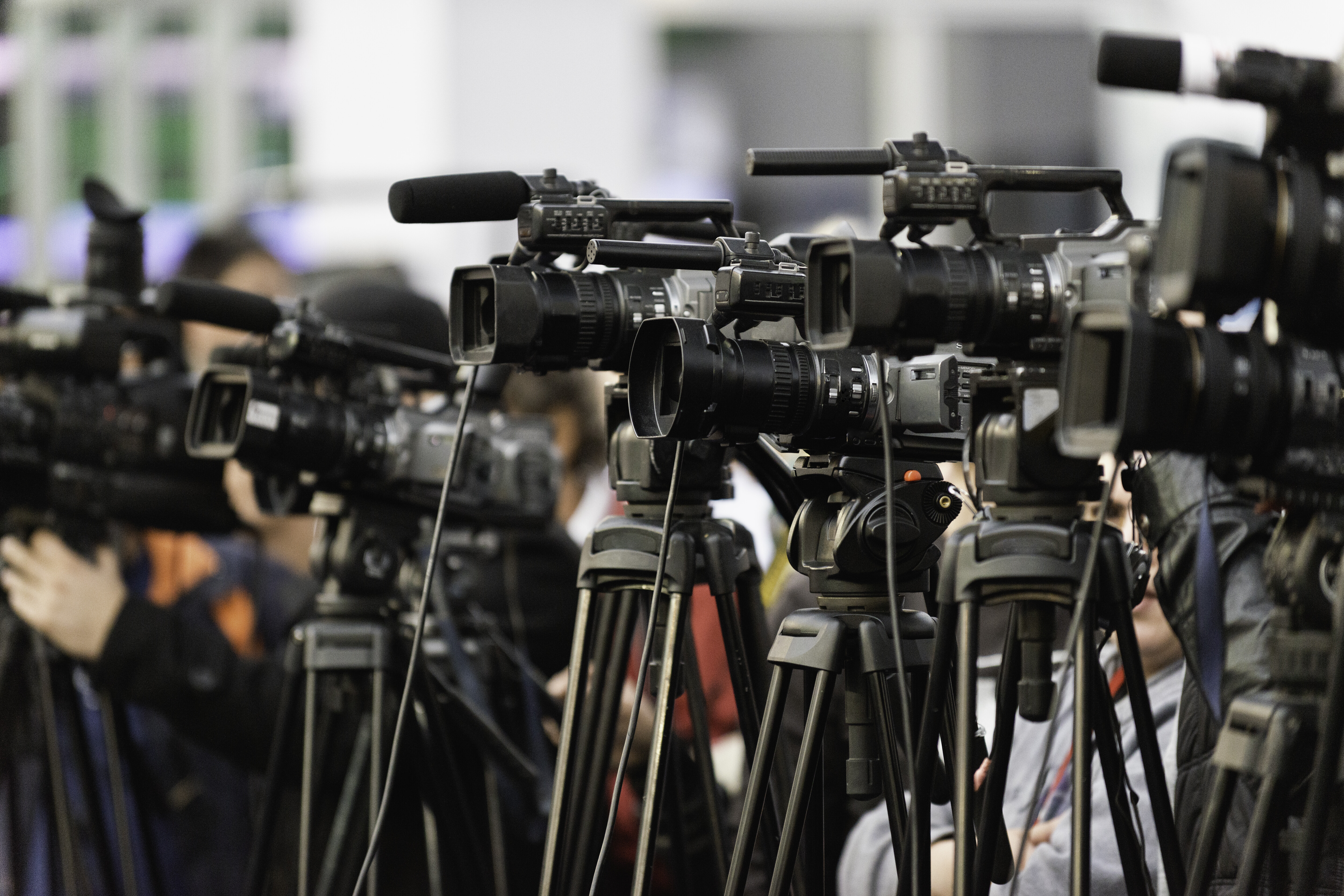Attacks on journalists by members of the public grow
14 September 2021
Journalist safety has worsened since the start of the pandemic. But as governments globally introduce vaccines to control the virus’s spread, journalists are increasingly experiencing physical attacks – even in their own offices.
On 3 September, RTV Slovenija’s (RTV SLO) Ljubljana studio was stormed by a protest group of about 20 members of the public. IPI reports that the protesters – who were said to be COVID-deniers and opposed to COVID-19 vaccines – demanded airtime and an end to the public broadcaster’s alleged “censorship” in its pandemic coverage. No one was hurt and RTV SLO said it had filed criminal charges against the protestors.
#Slovenia: IPI strongly condemns shocking incident at headquarters of @RTV_Slovenija, which saw anti-vax protesters storm the newsroom.
This harassment of @rtvslo staff has gone on far too long. We express solidarity & hope to see swift action by police.https://t.co/c7HUilNt5u pic.twitter.com/X0atW6B3h0
— IPI – The Global Network for Press Freedom (@globalfreemedia) September 6, 2021
In a press release issued on the day of the attack, RTV SLO said its staff and guests have faced months of harassment from the protestors who have been camping in front of its Television Slovenija building. The public broadcaster condemned the attack and emphasised that the protestors “grossly abused the right to peaceful protest”. In a subsequent release, RTV SLO said that direct and indirect social media comments have placed the blame for the attack at the feet of the broadcaster’s journalists and other staff.
“We strongly condemn such hints, and our journalists work independently, professionally and credibly. Friday’s [3 September] incident showed how quickly words can turn into actions and the moral responsibility of those who publish such records is great,” RTVS said.
Unfortunately, the attack on RTV SLO and its staff is not an isolated incident. Within the past two months, protesters against the COVID-19 vaccines stormed the former BBC headquarters, mistakenly believing it was still active; a Channel 4 veteran presenter was abused by anti-COVID-19 vaccine protestors who had stormed the headquarters which housed the public broadcaster and two other news programmes; and a private broadcaster in Cyprus was attacked by about 2,500 protestors who also torched cars outside the building.
An escalation of attacks
Even before COVID-19 protestors added media offices to their focus, journalists and other media workers were experiencing physical attacks out in the field as they reported on the pandemic. Initially, journalists were attacked when they reported on lockdown measures, hospitalisations, and deaths. For example, IFJ noted that there was an increase in attacks against journalists covering COVID-19 protests, such as in Germany and The Netherlands. Most recently, Italian journalist Antonella Alba from public broadcaster Rai was attacked while covering a COVID-19 demonstration in Rome. CPJ reports that Alba was surrounded by protestors who called her a “terrorist” and attempted to grab her mobile phone, injuring her in the process. In another incident in Rome, a video journalist, Francesco Giovannetti, was repeatedly punched in the face by protestors who had ordered him to turn off his camera. Reports have also been noted across South Asia and parts of Africa, like South Africa.
Now, as countries push to contain the virus through vaccines, journalists are being attacked as they report on this new phase of the pandemic. However, it must be emphasised that these attacks have not come out of nowhere. For years, journalists have had to contend with anti-media rhetoric, often pushed by political figures. The term “fake news” – meant to refer to mis- or disinformation – has been used time and time again to discredit fact-based, critical journalism. With COVID-19, the term has been further weaponised as some governments seek to control the narrative and use the media as scapegoats by painting them as the enemy. “Fake news” laws have been used to further legitimise claims of the media as untrustworthy.
Meanwhile, the virus continues to ravage nations, and journalists are caught in the crossfires between governments and members of the public against government-imposed measures. But media organisations can act as sources of information, resources, and voices of reason for those who are vaccine-hesitant. The media must play a key role if the pandemic is to be brought under greater control but instead they are being accused of being mouthpieces of the state or of spreading false information.
It has become increasingly clear that journalists are losing their places of safety. Out in the field, journalists were always susceptible to physical attacks while they covered the pandemic. But now their offices are facing growing threats. Their digital security is also compromised, with female journalists in particular experiencing high levels of online attacks. These attacks against media workers drive self-censorship and fear at a time when critical and independent journalism is needed most.
The Public Media Alliance condemns all attacks on journalists and maintains that journalists must be able to report freely, accurately, and fairly.
Header image: Threats against freedom of press, a concept. Credit: OlafSpeier/iStock
Related Posts
29th April 2021
Project: The Impact of COVID-19 on Media Freedom, Media Business Viability and the Safety of Journalists in Southeast Asia
Our new project seeks to identify and…
9th March 2021
PMA partners with Media Action Nepal for “Code of Ethics to Improve Conflict Sensitive Reporting and Safety of Journalists in South Asia” project
Introducing Media Action Nepal as a…


